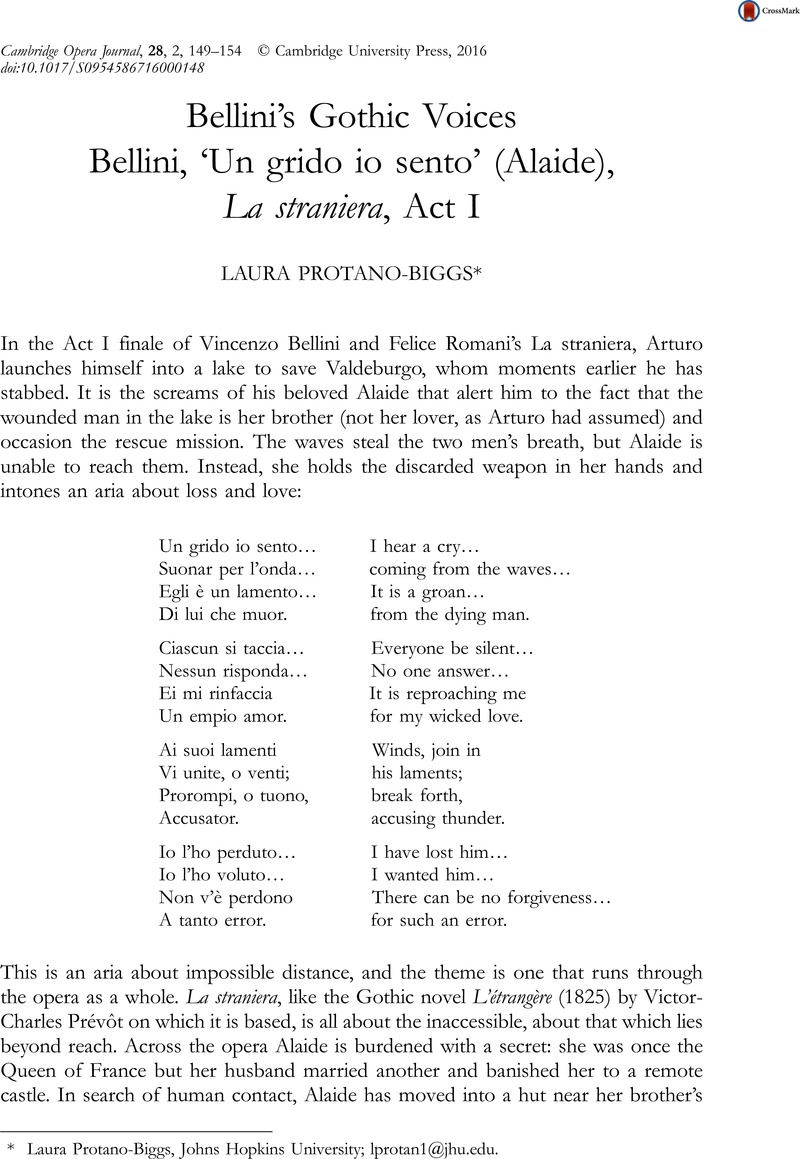Published online by Cambridge University Press: 28 September 2016

Laura Protano-Biggs, Johns Hopkins University; [email protected].
1 On this, see Sedgwick’s, Eve Kosofsky early monograph The Coherence of Gothic Conventions (New York, 1980)Google Scholar.
2 See, for instance, the review of La straniera in L’eco (20 February 1829). Melina Esse has described reactions to this new aesthetic in an article that explores the rich implications of canto declamato. See Esse, , ‘Speaking and Sighing: Bellini’s canto declamato and the Poetics of Restraint’, Current Musicology 87 (2009), 7–45 Google Scholar.
3 These anecdotes are based on a letter from 1829 that Bellini was believed to have written in which the author describes this exact compositional process; the letter has since been denounced as a forgery. The earliest reproduction of the letter can probably be dated to 1843, when it appeared in an anonymous pamphlet published in Florence. See Smart, Mary Ann, ‘In Praise of Convention: Formula and Experiment in Bellini’s Self-Borrowings’, Journal of the American Musicological Society 53 (2000), 30 CrossRefGoogle Scholar. Maria Rosaria Adamo and Friedrich Lippmann have discussed the letter’s authenticity; see Lippmann, Adamo and, Vincenzo Bellini (Turin, 1981), 196 Google Scholar.
4 For a discussion of the complexities of Bellini’s attitudes towards words and music, see Smart, ‘In Praise of Convention’.
5 Bellini also uses an arioso-like texture in Act I scene 2, when the maiden Isoletta is haunted by a phrase she once heard echo from the Straniera’s mouth and feels compelled to reiterate it. Here, too, a burst of melodious song accompanies an invisible act of possession.
6 Esse has advanced a distinct, but related argument, that Bellini used canto declamato to create ‘strategic moments of restraint [that] allow for … emotional spillage’. See Esse, ‘Speaking and Sighing’, 38.
7 For a now-classic discussion of coloratura and mechanisms of resistance in mad scenes, see Smart, Mary Ann, ‘The Silencing of Lucia’, Cambridge Opera Journal 4 (1992), 119–141 CrossRefGoogle Scholar.